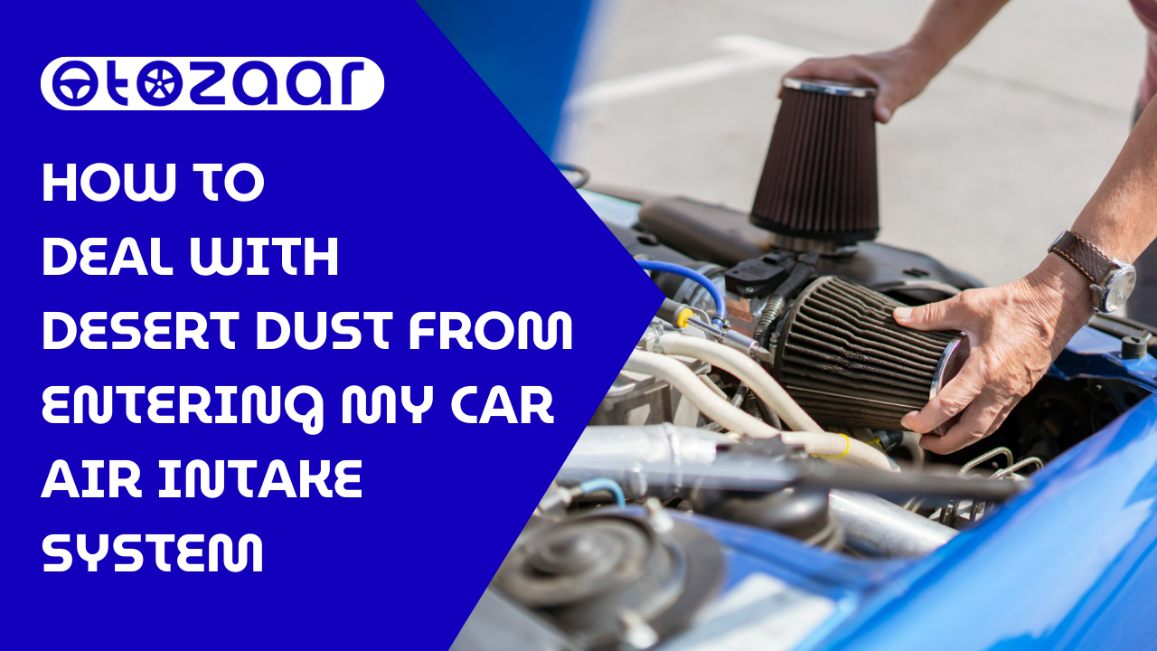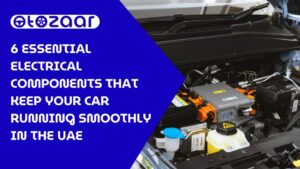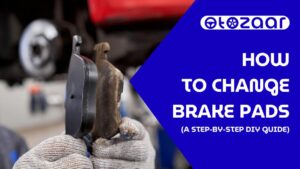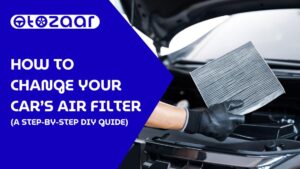The majestic desert landscapes of the United Arab Emirates (UAE) are truly captivating. However, the beauty of these arid surroundings comes with a unique challenge for car owners: desert dust. This fine, persistent dust can infiltrate your vehicle’s air intake system, leading to reduced performance, increased wear, and potential engine damage. Protecting your vehicle from the adverse effects of desert dust is essential for maintaining its efficiency and longevity. In this comprehensive guide, we will delve into the impact of desert dust on your car’s air intake system and provide practical solutions to mitigate its effects.
Understanding the Impact of Desert Dust
Desert dust consists of minuscule particles that can easily become airborne and infiltrate various components of your vehicle. When these particles enter the air intake system, they can cause several issues:
1. Reduced Engine Performance:
Dust can obstruct the air filter, limiting airflow to the engine. This restriction can lead to diminished power, decreased fuel efficiency, and increased emissions, ultimately affecting your vehicle’s overall performance.
2. Increased Wear and Tear:
Dust particles are abrasive and can accelerate wear on engine components, leading to premature failure. Over time, this wear can result in costly repairs and replacements.
3. Potential Engine Damage:
If dust manages to bypass the air filter, it can enter the engine and cause damage to internal components such as pistons and cylinders. This can lead to serious engine issues and potentially costly repairs.
How Desert Dust Enters the Air Intake System
Understanding how desert dust enters your vehicle’s air intake system can help you take effective preventive measures:
1. Airborne Particles:
Dust particles are often carried by the wind and can enter the air intake while driving. In the UAE’s arid environment, this is a common source of dust infiltration.
2. Open Windows and Doors:
Leaving your windows or doors open while parked can allow dust to settle inside the vehicle, increasing the risk of it entering the air intake system.
3. Damaged Seals:
Worn or damaged seals around the air intake can create pathways for dust to enter. Ensuring that these seals are in good condition is crucial for effective dust prevention.
Preventive Measures to Protect Your Air Intake System
Here are several practical steps you can take to safeguard your car’s air intake system from desert dust:
1. Regularly Replace the Air Filter
The air filter serves as your vehicle’s primary defense against dust and other airborne particles. Regular replacement of the air filter ensures that it remains effective in trapping dust and preventing it from reaching the engine.
Frequency: In the dusty environment of the UAE, it is advisable to replace the air filter every 10,000 to 15,000 kilometers. If you frequently drive in particularly dusty conditions, consider replacing it more often to ensure optimal performance.
2. Use High-Quality Air Filters
Investing in high-quality air filters designed to handle fine dust particles can provide superior protection for your engine. These filters often feature enhanced filtration capabilities, which are crucial in a desert environment.
Types: Consider using HEPA (High-Efficiency Particulate Air) filters or filters with multiple layers for improved dust capture. These filters are specifically designed to trap even the smallest particles and prevent them from entering the engine.
3. Inspect and Maintain Seals
Regular inspection and maintenance of the seals around the air intake system are essential for preventing dust infiltration. Worn or damaged seals can compromise the effectiveness of your air filter.
Maintenance: Apply silicone-based sealants to maintain the integrity of seals and prevent dust from bypassing the air filter. Regularly check these seals for signs of wear and replace them as needed.
4. Install a Snorkel
For drivers who frequently navigate off-road or desert conditions, installing a snorkel can be a highly effective solution. A snorkel raises the air intake point, reducing the amount of dust that enters the system.
Benefits: Snorkels are particularly advantageous for off-road vehicles and can also help prevent water from entering the air intake during wet conditions. This makes them a versatile addition to your vehicle’s dust protection strategy.
5. Keep Windows and Doors Closed
To minimize dust entry, keep your vehicle’s windows and doors closed when driving or parked in dusty areas. This simple yet effective measure can significantly reduce the amount of dust that settles inside the vehicle.
6. Use the Air Recirculation Function
When driving in dusty conditions, utilize the air recirculation function on your vehicle’s HVAC system. This feature prevents external air from entering the cabin and helps reduce the amount of dust that can infiltrate the air intake system.
Regular Maintenance and Cleaning
7. Clean the Air Intake System
Periodic cleaning of the air intake system is crucial for maintaining optimal airflow and preventing dust buildup. Removing accumulated dust and debris can help ensure that your engine remains protected.
Procedure: Use compressed air to blow out dust from the air intake ducts and surrounding areas. This cleaning process helps maintain the efficiency of your air intake system and prolongs its lifespan.
8. Monitor Engine Performance
Keep an eye on any changes in engine performance, such as reduced power or increased fuel consumption. These symptoms can indicate issues related to a clogged air filter or dust-related problems.
Action: If you notice any performance issues, inspect the air filter and intake system for dust buildup. Address any problems promptly to prevent further damage and maintain optimal performance.
When to Seek Professional Help
If you encounter persistent issues with dust entering your air intake system or notice significant engine performance problems, it may be time to seek professional assistance. A qualified mechanic can perform a thorough inspection and recommend tailored solutions to address your vehicle’s specific needs.
conclusion
Driving in the UAE’s desert environment presents unique challenges, but with the right precautions and maintenance practices, you can effectively protect your car’s air intake system from the detrimental effects of desert dust. Regularly replacing the air filter, maintaining seals, and using high-quality filtration products are key steps in safeguarding your engine. By implementing these proactive measures, you can ensure that your vehicle remains in peak condition, offering reliable performance and longevity despite the challenging desert conditions.






